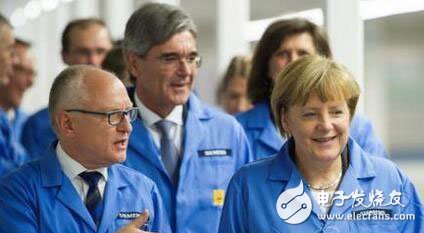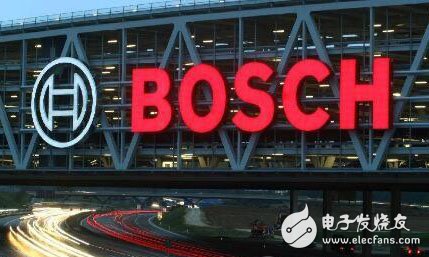Germany Amberg Siemens Smart Factory
1. Application background

As the proponent of the concept of Industry 4.0, Germany is also the first country to practice smart work. The Siemens plant in Amberg, the eastern city of Bavaria, Germany, is an early case of a German government, business, university and research institute working together to develop a fully automated, Internet-based smart factory. In the 100,000 square meter factory, there are only 1,000 employees. Nearly a thousand manufacturing units are only connected via the Internet. Most of the equipment is selected and assembled without human operation. Such a smart factory enables the product to be fully automated: the finished product on the assembly line tells the machine what the machine needs, and the machine automatically assembles the finished product according to this information. The production workshop is on the second floor. The first floor is an intelligent logistics distribution system. The application method is based on the normal planned distribution. According to the usage of the production line, the technicians will run out of logistics. After scanning the logistics number, they will pass. RFID automatically transmits the information to the central logistics area, and the central logistics area will automatically deliver the relevant logistics to the corresponding line-side library. The whole process does not require manual participation, and the information system is fully automated. The corresponding time is 15 Divided into two points).
2. Data source
Product information data, logistics number data, and link information data generated in the fully automated production process.
3. Application effect
24-hour production lead time (from the factory receiving the production order to the production of the product, delivery to the central warehouse)
Produce 1 product in 1 second;
Produce up to 3 billion parts per year;
The realization of the transparency of production, real-time online screening of production status reports, effective monitoring of every link in the production process.
Forming an integrated approach to integration, unified data standards, and platform integration of multiple IT systems.
The most amazing thing is that in the Amberg factory, there are about 15 defective products per 1 million products, the reliability is 99%, and the traceability is 100%. Such a smart factory can make the product fully and automatically produce, which is a model of a smart factory!
Bosch Humboldt Factory
1. Application background
As the world's largest supplier of automotive technology, Bosch's automotive brake system (ABS & ESP) has considerable strength in the market. The Bosch Humboldt factory, as a representative of Bosch's smart factory, has a special line in its production line with a unique RFID code that automatically “talks†to the checkpoints along the way. Each time a production link is passed, the card reader automatically reads out the relevant information and feeds it back to the control center for corresponding processing, thereby improving the overall production efficiency.
The intelligent factory is not simply replacing the manual operation with the machine. More is, the related technologies such as intelligence, information and automation are gradually brought into the whole process of manufacturing and production, making the production process more transparent and attaching each product. Smart ID cards allow seamlessly to interface parts produced in different regions.
At the Humboldt Logistics Center, each time a worker takes out a box of parts, he clips the “watch board†that records the product information into a rectangular plastic clip. The clip is attached to the box with a radio frequency identification code at the bottom of the clip - the ID of the box. After each production link, the card reader will automatically read out the relevant information and feed it back to the control center for corresponding processing. For example, the cargo truck carries it out of the logistics center, and the assembly plant 5000 meters away knows the dynamics: before the assembly workers put it on the production line, the logistics center and the supplier know that: the replenishment.

The production line visited by the reporter is mainly equipped with the injector of the diesel engine. The outer body of the injector and the internal ejector are provided by different suppliers. The two parts are printed with a two-dimensional code, which is the supplier's factory. Provided at the time. Bosch is responsible for the "Industry 4.0" war manager Andrias? Muller said that this is done to speed up visual management. Labeling individual product parts, the QR code is more convenient than the RF code. But every box of such components, Bosch will give it a radio frequency identity.
As a radio communication technology, the principle of radio frequency identification is not complicated. Muller said that the core of "Industry 4.0" is "IoT." There are several ways to attach a smart tag to a product: barcode, QR code, shot size code and sensor. Barcodes and QR codes must be scanned at close range, susceptible to corrosion by water and chemicals, and RF codes can be quickly read through a variety of media. The RF code system introduced at the Humboldt plant costs hundreds of thousands of euros, but it is worth it.
The biggest difficulty in applying RF code systems is how to integrate new technologies into the original processes for standardized production. Each piece of spare parts is labeled with a smart label. No matter where the parts are produced, what kind of "dialects" will be used, after entering the process, they must say "Mandarin" that they can understand each other.
2. Data source
Personal product ID card information data (barcode, QR code, shot code and sensor), docking information data, etc.
3. Application effect
After the new system is put into use, the factory inventory is reduced by 30%, the production efficiency is increased by 10%, and the savings can reach tens of millions of euros. The use of RF codes also makes the control of the entire product process more transparent and real-time, and each product is labeled with a smart ID card to seamlessly interface the parts produced in different regions.
Independent RF code The more than 20 production lines of Bosch's plants bring low-cost and high-efficiency returns. This technology, which allows each part to speak, is also an important embodiment of a smart factory.
Digital Siganage For Restaurant
The main content of restaurant Digital Signage: digital signage broadcasts seasonal food, main dishes, menu display screen,in-store activities, and attractive dishes can create a pleasant atmosphere with unique restaurant characteristics. The dynamic display of dishes by the LCD touch screen affects consumers, and the first round of visual bombardment on customers entering the store, which promotes spending.
digital siganage posters,Restaurant order signage,menu display screen,LCD touch screen
Jumei Video(Shenzhen)Co.,Ltd , https://www.jmsxdisplay.com